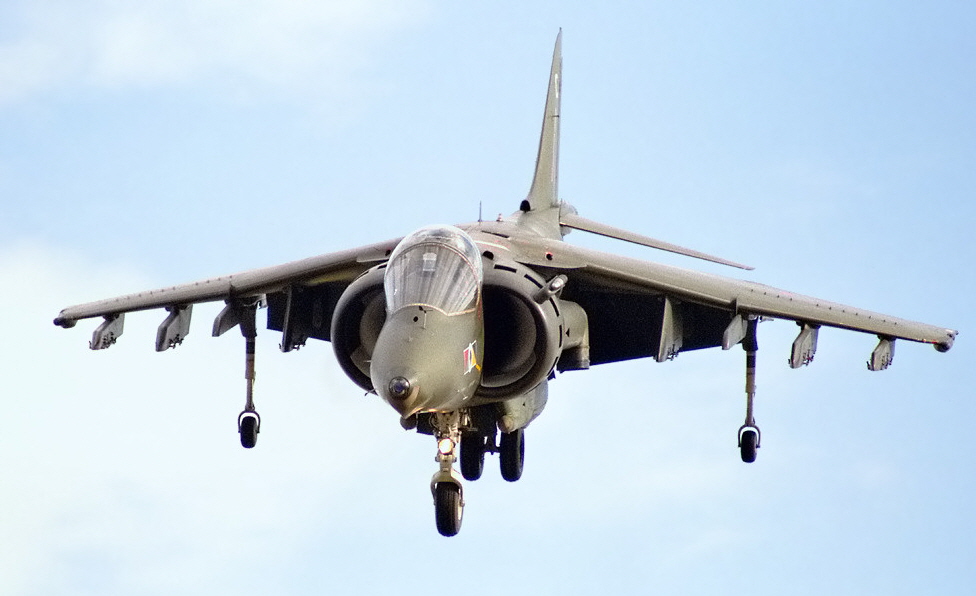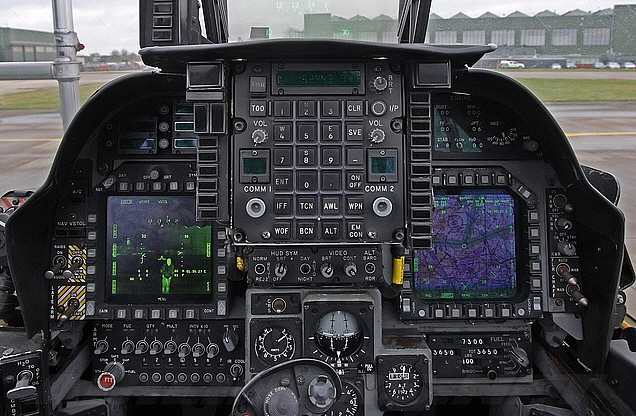 The Harrier, informally referred to as the Jump Jet, is a family of military jet aircraft capable of vertical / short takeoff and landing (V/STOL) operations. Historically the Harrier was developed in Britain to operate from ad hoc facilities such as car parks or forest clearings, avoiding the need for large air bases vulnerable to tactical nuclear weapons. Later the design was adapted for use from aircraft carriers. The Harrier is also distinct as being of modern era, yet subsonic, contrasting with most of the major Western post-World War II-era attack aircraft, which tend to be supersonic.
The Harrier, informally referred to as the Jump Jet, is a family of military jet aircraft capable of vertical / short takeoff and landing (V/STOL) operations. Historically the Harrier was developed in Britain to operate from ad hoc facilities such as car parks or forest clearings, avoiding the need for large air bases vulnerable to tactical nuclear weapons. Later the design was adapted for use from aircraft carriers. The Harrier is also distinct as being of modern era, yet subsonic, contrasting with most of the major Western post-World War II-era attack aircraft, which tend to be supersonic.
The aircraft was developed in the 1960s and formed the first generation of the Harrier series of aircraft. It was the first operational close-support and reconnaissance fighter aircraft with vertical / short takeoff and landing (V/STOL) capabilities and the only truly successful V/STOL design of the many that arose in that era. The Harrier was produced directly from the Hawker Siddeley Kestrel prototypes following the cancellation of a more advanced supersonic aircraft, the Hawker Siddeley P.1154. The Royal Air Force ordered the Harrier GR1 and GR3 variants in the late 1960s. It was exported to the United States as the AV-8A, for use by the US Marine Corps, in the 1970s.
The RAF positioned the bulk of their Harriers in West Germany to defend against a potential invasion of Western Europe by the Soviet Union; the unique abilities of the Harrier allowed the RAF to disperse their forces away from vulnerable airbases. The US Marine Corps used their Harriers primarily for close air support, operating from amphibious assault ships, and, if needed, forward operating bases. Harrier squadrons saw several deployments overseas. The Harrier's ability to operate with minimal ground facilities and very short runways allowed it to be used at locations unavailable to other fixed-wing aircraft. The Harriharrier 2er received criticism for having a high accident rate and for a time-consuming maintenance process.
In the 1970s the British Aerospace Sea Harrier was developed from the Harrier for use by the Royal Navy on Invincible class aircraft carriers (that’s when we did have aircraft carriers). The Sea Harrier and the Harrier fought in the 1982 Falklands War, in which the aircraft proved to be crucial and versatile. The RN Sea Harriers provided fixed-wing air defence while the RAF Harriers focused on ground-attack missions in support of the advancing British land force. The Harrier was also extensively redesigned as the AV-8B Harrier II and British Aerospace Harrier II by the team of McDonnell Douglas and British Aerospace. The innovative Harrier family and its Rolls-Royce Pegasus engines with thrust vectoring nozzles have generated long-term interest in V/STOL aircraft.
The various versions of the Harrier was in service with the Royal Air Force from 1969 up until 2010, a total of 41 years. In the Royal Navy the Fleet Air Arm operated the Sea Harrier from 1980 up until 2006. In total, including aircraft destined for foreign forces (USA, Italy, India, Spain and Thailand), there were 824 Harriers built.

